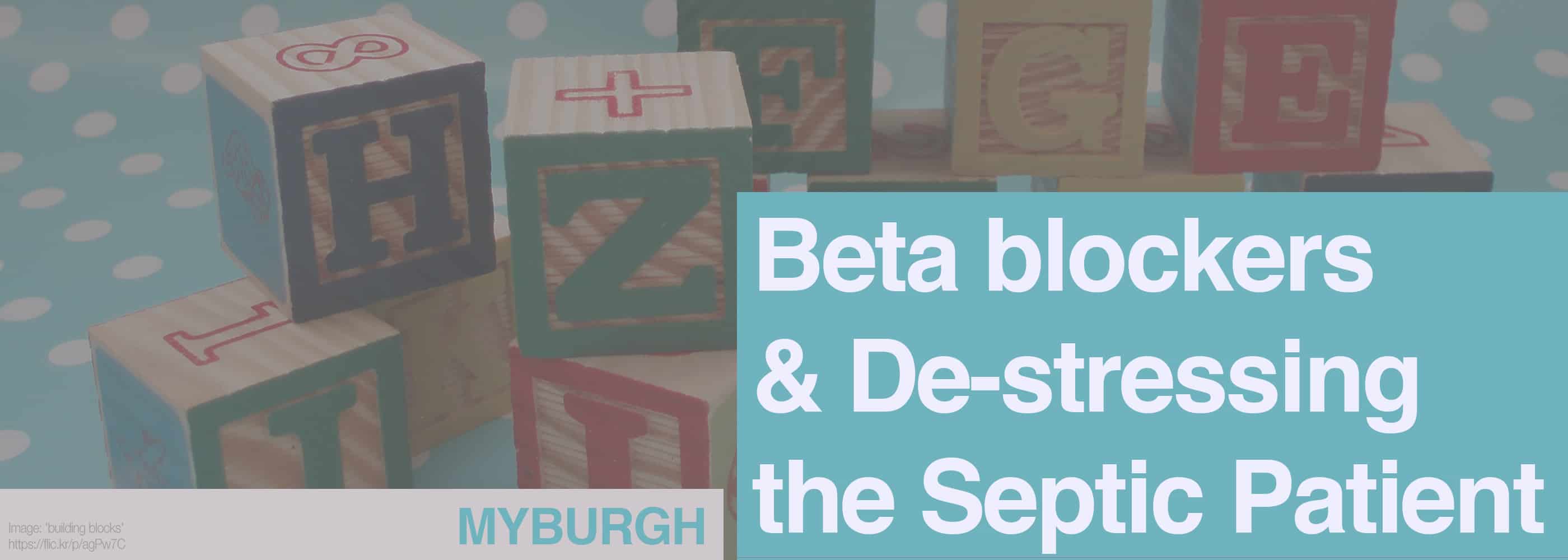Beta Blockers in Sepsis
John Myburgh’s superb talk on the emerging evidence for the use of beta-blockade in sepsis.
What’s it about?
This is a new talk from John and he was the perfect person to take on this hot topic!
Recently there have been a run of articles supporting Beta Blockade in sepsis.
For example this one and commentaries such as this by Kristi L. Koenig:
Beta-Blockers in Septic Shock: A New Indication?
In a pilot study, 24-hour esmolol drip preserved microvascular blood flow and reduced norepinephrine requirements in hemodynamically optimized septic shock patients.
While tachycardia is associated with adverse outcomes in septic shock, whether the elevated heart rate is pathologic or simply a marker for sympathetic stimulation is not clear. In a prospective observational study in an intensive care unit in Rome, investigators administered 24-hour esmolol drips titrated to a heart rate of 80 to 94 beats per minute (bpm) to 25 sedated and mechanically ventilated adult patients in septic shock after 24 hours of hemodynamic optimization. Eligible patients had heart rates greater than 95 bpm and initially required norepinephrine to maintain a mean arterial pressure of at least 65 mm Hg after fluid resuscitation. Patients with significant valvular disease, pronounced cardiac dysfunction, or ongoing need for inotropic agents were excluded. All patients received continuous infusion of hydrocortisone (200 mg/day).
While cardiac output fell with lower heart rate after 24 hours of esmolol administration, microvascular blood flow (measured sublingually), stroke volume, and mean arterial pressures were preserved. Lactate levels did not increase. Norepinephrine dose dropped significantly (from 0.53 µg/kg/minute before infusion to 0.41 µg/kg/minute after).
Myburgh’s Take
Never afraid to speak his mind, John (@JAMyburgh) challenges some of the new excitement surrounding Beta Blockers in sepsis with some compelling evidence.
Having spent his whole career working in crit care, with many years researching catecholamines in sepsis, he gives a fascinating historical historical perspective on this topic.
He covers venodilation, “cold-shock”, Guyton’s curves, the “Fluid of the Devil” and cardiac output monitoring.
He highlights the problem of what endpoints we should be looking for in sepsis trials. MAP is flawed. Lactate is flawed. Heart rate is being explored but is only one variable.
Are we stupid in wanting to believe in a new magic bullet?
JFK: “We enjoy the comfort of opinion without the discomfort of thought.”
[/az_box_icon][az_lightbox_video image=”8234″ animation_loading=”yes” animation_loading_effects=”scale_up” link_url=”https://vimeo.com/100766859″ title=”Myburgh Sepsis and Beta blockers”]

























